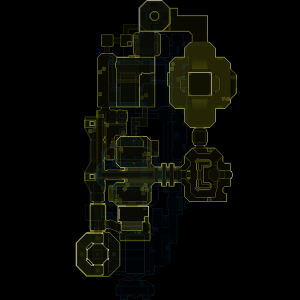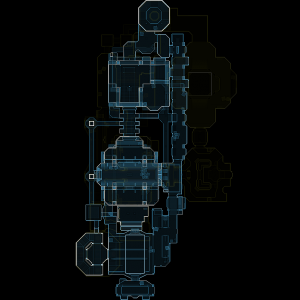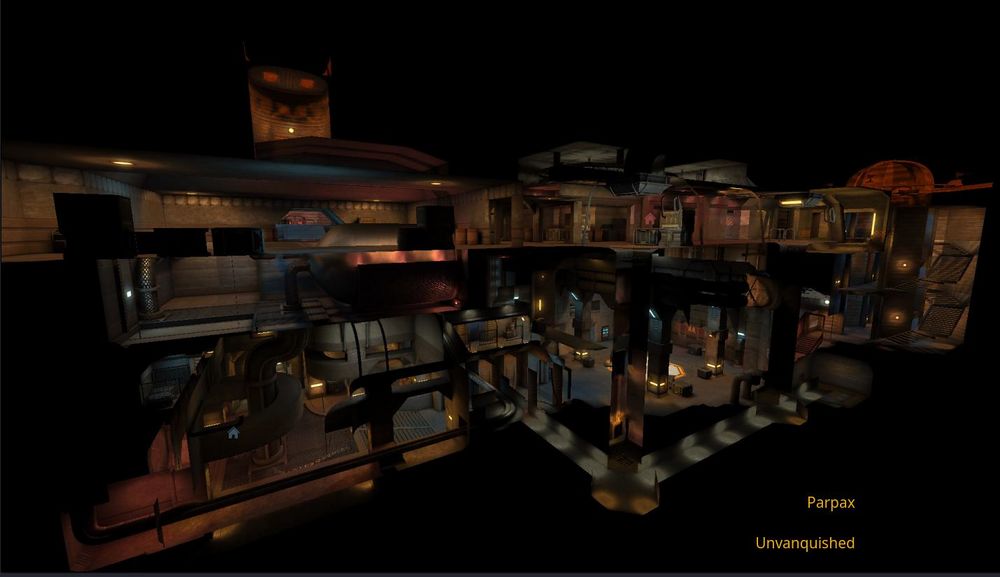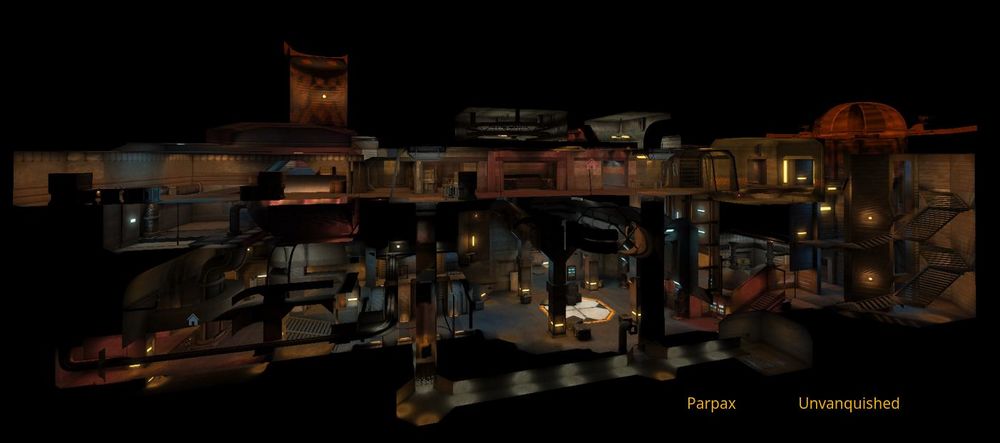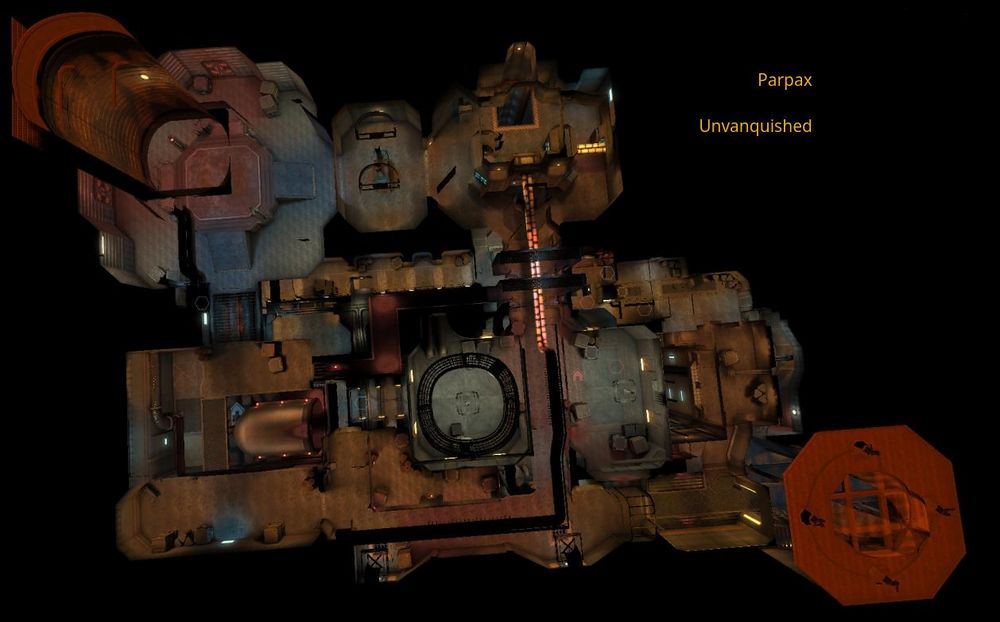Maps/Parpax
 |
Page out of date |
| Parpax | |
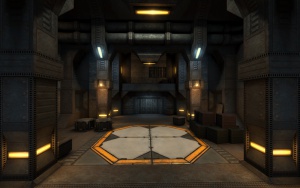 front storage | |
| No. of players: | 8-16 |
| No. of brushes: | 11k |
| Size: | 2500 x 4500 x 1000 qu³ |
A medium to large sized map by Viech.
You can post bugs, critics and improvement ideas on the talk page or on the forums. Don't forget to name the version you are testing!
Contents
Gameplay
General Strategy
Do try to control the big room in front of your default base's front entrance in order to defeat enemies before they can start a siege. However, don't forget to have a look at the base itself as they are still able to attack through the rear.
Human Strategy
Do use the jetpack to fly over the strange machine in the alien's default base and drop grenades right at the slimy feet of the Overmind.
Alien Strategy
Do use mantises and marauders to enter the human's default base via the pipe shafts.
Trickjumping
Lightly armored humans can use the bevels in octagon hall to make a backwards duckjump onto the pipes that lead into the alien's default base. Heavily armored lucifer cannon bearers can do a lucijump to get onto them.


